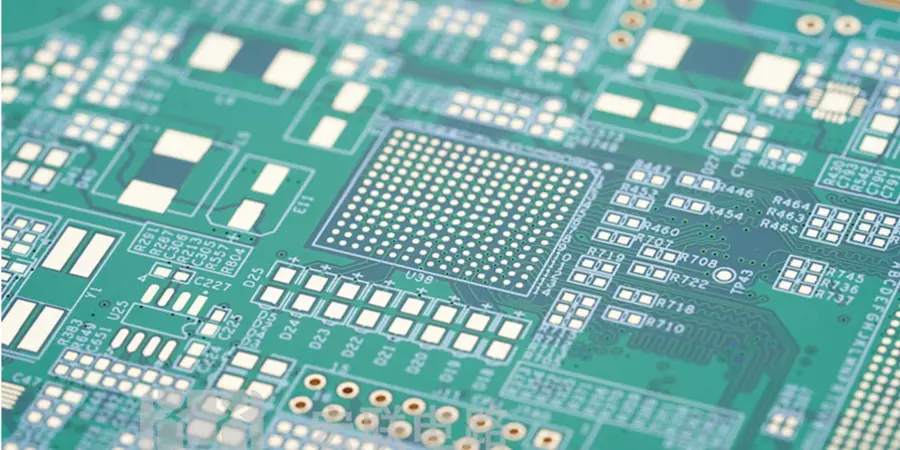Multilayer PCBs form the backbone of every performance-driven electronic system on the market—5G radios, electric vehicles, surgical robots, AI accelerators, and beyond. By stacking copper-etched layers around strategic ground and power planes, designers achieve tight routing density, ultra-clean signal paths, and compact form factors that single- or double-sided boards simply cannot match. Partnering with a China-based factory that merges rapid-turn capacity with IPC-class quality unlocks shorter R&D cycles and globally competitive unit costs.
1 | Why Multilayer PCBs Outperform Traditional Boards
Even entry-level gadgets now embed Wi-Fi 6E, Bluetooth 5.3, and USB4, pushing edge speeds past 20 Gbps. That bandwidth simply cannot travel across long, exposed traces without impedance control and reference planes.
- Higher Routing Density — up to 10× signal lines in the same footprint by distributing layers.
- Superior Signal Integrity — matched-length differential pairs surrounded by dedicated ground planes keep eye-diagrams wide open at 28 GHz.
- Built-In EMI Shielding — inner copper planes act as Faraday cages, cutting radiated emissions up to 15 dB versus external cans.
- Compact & Lightweight — four layers often reduce PCB area by 40 % and weight by 30 % compared with two-layer plus jumper cables.
- Reliability — fewer board-to-board connectors mean fewer vibration-induced failures; via-in-pad reduces BGA escape stress.
Key Metric Snapshot
| Metric | Multilayer PCB | 2-Layer PCB |
|---|---|---|
| Max Data Rate | 56 Gbps (PAM4) | < 5 Gbps |
| Typical Board Size | 60 × 40 mm (8 layers) | 100 × 70 mm |
| EMI Margin | CISPR 25 Class 5 | Needs additional cans |
| Mean Time Between Failures | 1.8 M hrs (IPC Class 3) | 0.9 M hrs |
These advantages make multilayer assemblies the de-facto choice for mission-critical designs—from inflight avionics that must withstand -55 °C ↔ +125 °C cycles to wearable defibrillators that cannot drop packets during Bluetooth telemetry.
2 | Our Fast & Scalable Manufacturing Workflow
Speed is pointless without repeatable quality. We therefore run an integrated workflow that compresses prototype and production timelines while safeguarding every critical dimension.
a. Early DFM & Stack-Up Simulation
We import your Gerbers or native Altium/Allegro project, validate impedance, check copper balance, and recommend via strategies (blind, buried, stacked microvias) before the first panel is pressed.
b. Parallel Vacuum Lamination
Four hydraulic presses operate in parallel; each cycle uses calibrated pressure profiles and real-time temperature feedback (±1.5 °C) to eliminate resin voids. Standard 6-layer prototypes ship in 5 days; 12-layer HDI in 7–8 days.
c. Hybrid Drilling Suite
Mechanical spindles handle through-holes to 0.15 mm; UV-laser drills cut 60 µm microvias; CO₂ lasers back-drill stubs for high-speed nets. Combined positional tolerance: ±25 µm across a 510 × 460 mm panel.
d. 100 % Inspection & Test
Inner-layer AOI, solder-mask AOI, flying-probe (low volume) or bed-of-nails (mass) electrical testing. Impedance coupons prove 50 Ω ± 10 % single-ended / 100 Ω ± 7 % differential consistency.
e. Component Sourcing & SMT
Co-located SMT lines load 01005 passives and 0.3 mm-pitch BGAs under nitrogen reflow. Finished assemblies undergo X-ray for BGA voids and 4-hour thermal cycling before final pack-out.
With Shenzhen’s component ecosystem at our doorstep, we compress the prototype → pilot → mass journey by up to 40 % versus offshore sourcing models.
3 | Material & Stack-Up Engineering—Getting It Right First Time
Selecting the wrong laminate can doom a 28 Gbps channel or cause glass-transition failures in an under-hood ECU. We stock—and model—tier-one substrates:
| Laminate Family | Dk @ 1 GHz | Loss Tan | Tg (°C) | Target Application |
|---|---|---|---|---|
| FR-4 Standard | 4.5 | 0.020 | 135 | Consumer IoT, cost-sensitive EMS |
| FR-4 High-Tg | 4.2 | 0.018 | 175 | Industrial drives, automotive MCUs |
| Low-Loss FR-4 | 3.8 | 0.009 | 185 | 10 GbE switches, DDR5 backplanes |
| PTFE / Rogers | 3.2 | 0.002 | 245 | 5G mmWave radios, Sat-com LNB |
| Metal-Core FR-4 | 5.2 | 0.025 | 130 | LED lighting, high-current VRMs |
Design Best Practices
- Outer = High-Speed Layers → minimize stub via length, allow assembly rework.
- Mid = Solid Planes → create low-inductance return paths and reduce IR drop.
- Inner = Signal Fan-Out → bury sensitive analog traces away from radiators.
- Via-in-Pad where BGA pin density > 1 000; copper cap + planarization maintains flatness for 0.25 mm pitch.
Our RFQ portal lets you upload stack-up requirements; built-in calculators display predicted impedance and insertion loss in real time—cutting iterative emails.
4 | Industry-Specific Success Stories
Telecom & 5G Infrastructure
A 14-layer PTFE/low-loss hybrid enabled a 39 GHz phased-array front-end with insertion loss under 0.12 dB/in; delivered 300 pre-series units in 10 days to a European OEM.
Automotive ADAS & EV Power
For a Tier-1 supplier, we produced an 8-layer, 2 oz copper stack with via-fill and selective back-drilling, qualified to AEC-Q100 and withstood –40 °C ↔ +140 °C, 500 thermal cycles.
Medical Diagnostics
A rigid-flex 6-layer PCB with biocompatible coverlay passed IEC 60601-1 creepage clearance and 1 000 autoclave cycles for an intra-operative imaging probe.
Edge AI & Data Center
Our HDI 12-layer board integrates PCIe Gen 5, DDR5 5600, and 90 A VRM zones on embedded copper coins, allowing 0.4 °C/W thermal resistance—30 % cooler than competitors.
Conclusion
Multilayer PCB assembly is no longer a luxury; it is the enabling technology for any product that must be smaller, faster, cooler, and more reliable than its predecessor. By combining quick-turn Chinese manufacturing agility with IPC-certified processes and rigorous material science, we help engineers leap from concept to mass production in record time.
Ready to accelerate your next design? Upload your Gerbers or ECAD files, and our engineering team will return a full DFM report—usually within 24 hours—plus a competitive quotation that includes fabrication, assembly, and turnkey component sourcing.

